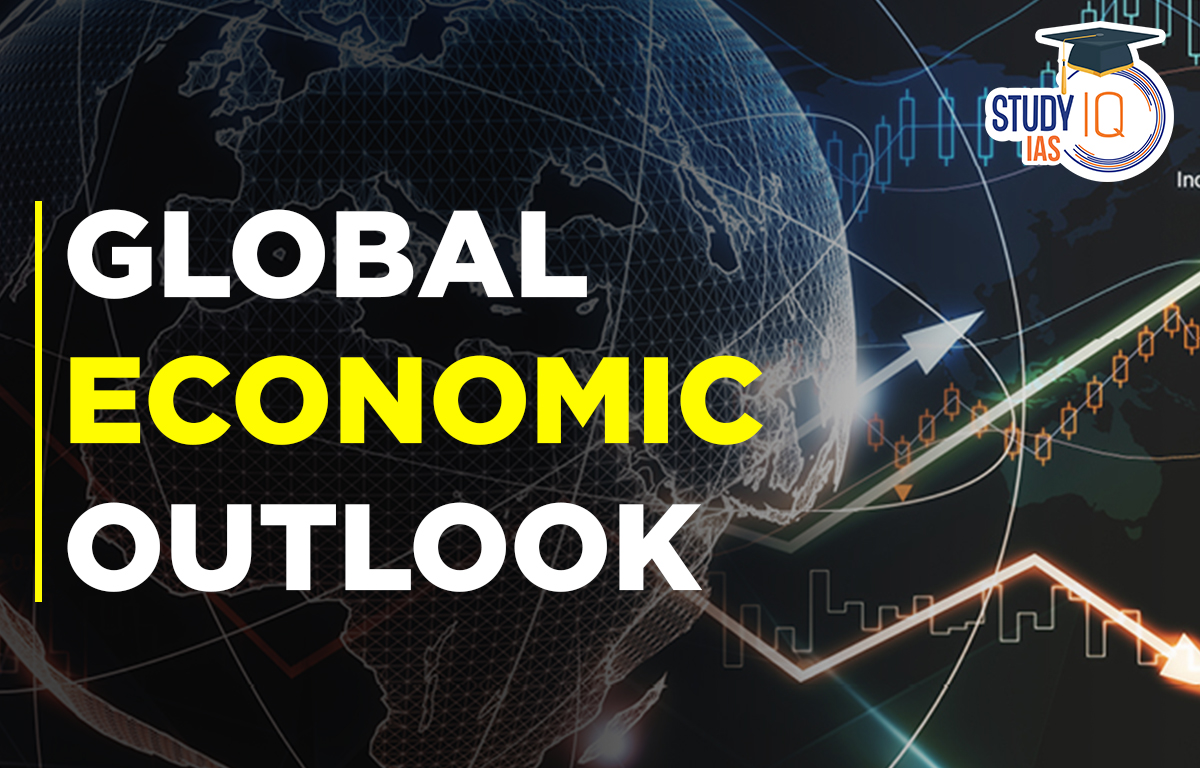Table of Contents
Context: In its January update of the World Economic Outlook (WEO) report, the IMF has marginally improved the forecast for global growth in 2023.
About World Economic Outlook (WEO)
- It is a bi-annual publication by the International Monetary Fund (IMF) that provides analysis and forecasts of the global economic situation and prospects.
- The report typically includes a global outlook, as well as regional and country-specific analyses, and provides insights into key economic and financial trends, risks, and policy challenges facing the world economy.
- The IMF releases the WEO twice every year, in April and October, apart from updating it twice — in January and July.
Key takeaways from the WEO’s January 2023 update
- Global growth: According to the IMF’s October 2022 WEO, the global growth rate will decelerate from 3.4% in 2022 to 2.7% in 2023, resulting in a recession for many people in 2023.
- However, in the January update, the IMF effectively rules out a global recession.
- Global growth is now projected to fall to 2.9% in 2023 before rising to 3.1% in 2024.
- Significant revisions: China, Russia, the US, Germany, and Italy are some of the key economies that have seen the most significant upward revisions in their 2023 GDP forecasts.
- The United Kingdom saw a substantial (almost 1 percentage point) downgrade in its 2023 GDP.
- Global inflation: Global inflation is set to fall from 8.8% in 2022 to 6.6% in 2023 and 4.3% in 2024, stated the IMF. Price rise is slowing for two main reasons:
- One, monetary tightening all across the world — higher interest rates drag down overall demand for goods and services, which in turn slows down inflation.
- Two, in the wake of a faltering demand, prices of different commodities — both fuel and non-fuel — have come down from their recent highs.
- In 2023, advanced economies are expected to have an inflation of 4.6% while emerging economies will continue to face an inflation of 8.1%.
- Indian Scenario: There’s been no change in India’s growth outlook since October 2022.
- India will stay the world’s fastest growing major economy in 2023 and 2024.
- Growth in India is set to decline from 6.8% in 2022 to 6.1% in 2023 before picking up to 6.8% in 2024, with resilient domestic demand despite external headwinds, states the IMF
What is Recession?
- A recession is a period of economic decline characterized by a decrease in GDP, employment, and trade lasting typically two consecutive quarters or more.
- Recessions can have a significant impact on individuals and businesses, and can lead to a decline in consumer spending, lower investment, and reduced economic growth.
The International Monetary Fund (IMF)
- About: IMF is a specialized agency of the United Nations to foster global monetary cooperation, secure financial stability, facilitate international trade, promote high employment and sustainable economic growth, and reduce poverty around the world.
- Headquarters: Washington D.C.
- Establishment: The IMF was established through the Bretton Woods Conference 1944 in the aftermath of the Great Depression of the 1930s.
- Membership:
- Currently, the IMF has 190 member countries.
- India was among the 44 founding member countries of IMF.
- Any other state, whether or not a member of the UN, may become a member of the IMF in accordance with IMF Articles of Agreement and terms prescribed by the Board of Governors.
- Membership in the IMF is a prerequisite to membership in the IBRD.
- Pay a quota subscription:
- On joining the IMF, each member country contributes a certain sum of money, called a quota subscription, which is based on the country’s wealth and economic performance.
- Quotas are denominated (expressed) in SDRs (Special Drawing Rights).
- Members’ voting power is related directly to their quotas.
- Special Drawing Rights (SDRs):
- The SDR is an international reserve asset, created by the IMF in 1969 to supplement its member countries’ official reserves.
- SDR is the IMF’s unit of account and not a currency.
- The currency value of the SDR is determined by summing the values in U.S. dollars, based on market exchange rates, of a SDR basket of currencies.
- SDR basket of currencies includes the U.S. dollar, Euro, Japanese yen, pound sterling and the Chinese renminbi (included in 2016).
- The SDR basket is reviewed every five years.
- SDRs represent a claim to currency held by IMF member countries for which they may be exchanged.
- Important publications:
- The World Economic Outlook
- The Global Financial Stability Report


 TNPSC Group 4 Admit Card 2025 Out at tnp...
TNPSC Group 4 Admit Card 2025 Out at tnp...
 Species Added to India's Flora and Fauna...
Species Added to India's Flora and Fauna...
 Daily Quiz 02 July 2025
Daily Quiz 02 July 2025





















